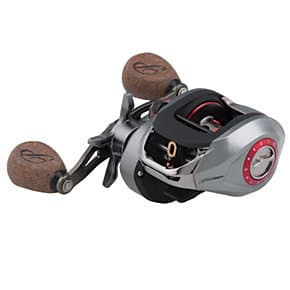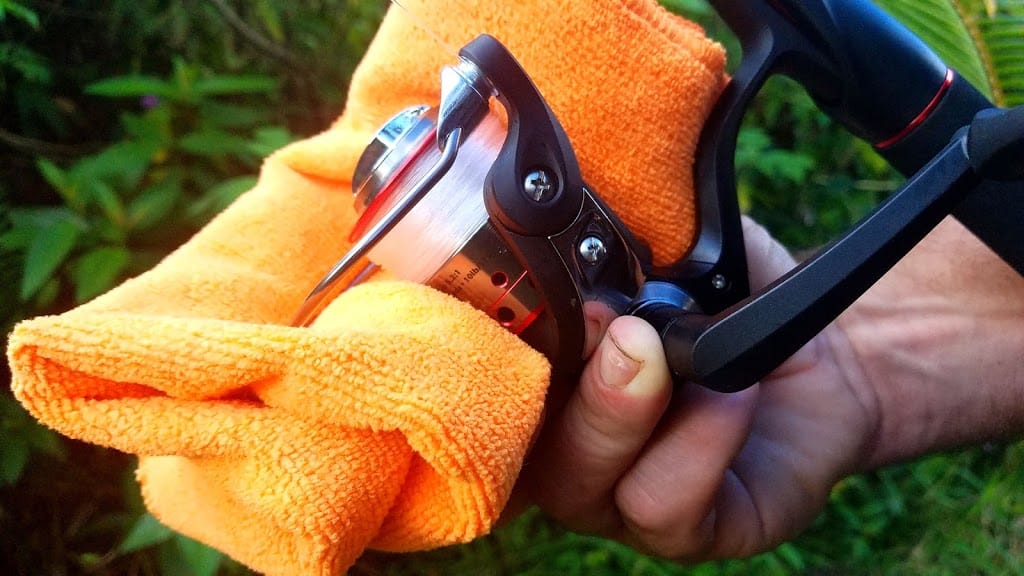
I don’t know about you, but the first time I went to look into gearing myself up to be a Kayak Fisherman, choosing the right reel was the toughest part. I spent many hours researching before I finally bought one and have since tested out a few. Here’s what I found makes the best type of reel for Kayak Fishing.
The best type of reel for Kayak fishing is a spinning reel. A spinning reel is able to cast a decent distance without tangling issues, can be used for precision fishing in tight spaces and is strong enough to reel in the big fish.
A spinning reel is a perfect reel for a wide range of applications and would be my first choice, but there are times that it’s not always the best. Depending on how you are fishing off of your Kayak, a baitcaster reel may be a better choice. Let’s dive into the differences between these two reels.
Baitcaster vs. Spinning Reel: What’s the Difference?
A fisherman uses tools, just like in any trade. In our trade, the rod and the reel are THE main tools needed for fishing. Sometimes tools get so specialized that they are designed to be used for a particular job. That is the case between baitcaster reels and spinning reels. See the chart below, which highlights some of these differences.
| Spinning Rod | Baitcaster Rod |
| Light Tackle | Heavy Tackle |
| Good for Whipping | Good for trolling or dunking |
| Easy to cast | Tends to get backlash for novice users |
| Great for erratic lures ie. poppers | Great for moving lures ie. Live bait |
| Allows for controlled line release |

A Spinning reel is recommended for anyone starting out on their fishing journey. They are super easy to cast and don’t tend to tangle like their baitcaster counterparts. The spinning reel is much easier to cast from a seated position. The casts are easy to control and do well in tight spaces such as coves or small creeks.
You can choose to get a larger reel that could hold a larger line to go after the bigger fish, but then you are sacrificing weight and comfort. You are also very limited when it comes to pairing up a good spinning rod to go with your larger reel. Therefore, most anglers tend to use spinning reels and rods for more precision techniques.

The baitcaster reel is a much more versatile reel than the spinning reel but does require a lot of hours to understand how to use it right. You can troll with it, dunk with it, bring in the trophy fish or use it to make light casts that bring in the pan-sized fish.
These reels tend to have issues with backlash from time to time, even for the pros, which tends to have people stary from using them. When doing light casts, especially from a seated position like in a kayak, backlash can happen, creating for one hell of a time getting that mess back under control.
That’s why I’ll just use the spinning reel combo for those light tasks and save the baitcaster reel for trolling and dunking. When trolling, the baitcaster reel allows for a controlled line release while the reel is seated in its holder. It also has the winching power to bring in the big fish that tend to get caught when trolling or dunking.
What Materials Should Your Reel be Made Of?
Kayak Fishing tends to have increased demands on fishing equipment when compared to more traditional ways to fish. You’re constantly casting from seated positions, creating extra fatigue on an already fatigued body. The rods and reels are constantly banged, twisted up, dunked in the water, you name it.
The equipment takes a beating, that’s why it’s important to have your reel made from the right materials.
Ensuring your reel is made with corrosion-resistant material such as magnesium or carbon composite will give you a reel that is not only able to take a beating but is lightweight as well.
What Size Reel is Best?
When choosing the size of your reel, it is best that you already have your rod chosen. You do not want a reel that is too small for the rod you have chosen. If you pair a longer rod with a reel that is too small, you lose the ability to make the long casts that your larger rod allows.
Check out this article that goes into how to choose the right rod.
For offshore saltwater fishing, you want a reel that can handle at least 250 yards of line. You’re going to want the extra line available if you’re lucky enough to hook one of the big guys. If your fishing in freshwater or inshore on the ocean, your reel should be able to hold at least 125 yards of line.
Other things to consider when choosing your reel is gear ratio, maximum drag, as well as the number (and quality) of the bearings.
| Real Features | Freshwater/Inshore/ Spinning | Offshore Saltwater/ Baitcaster |
| Gear Ratio | 6:2:1 | 7:6:1 |
| Maximum Drag | 15-20 lbs | 18-24 lbs |
| Bearings | 10-14 | 8-11 |
Reel Features Explained
In the table above, we show you other features to look for when selecting the best type of reel for kayak fishing. Being as educated as you can on all of these features will allow you to make the best choice for you.
Gear Ratio
The gear ratio is just a fancy way of saying how many times the spool rotates with each turn of the handle. A gear ratio of 6:2:1 means that the spool rotates 6 times with every turn of the handle. A gear ratio of 7:6:1 means the spool turns 7½ times with every turn of the handle. As you can see in the table above, most anglers like their baitcaster reels to be between 7 & 8 and their spinning reels to be between 6 & 7.
Maximum Drag
Drag describes how heavy your fish will feel from your rod. The higher the drag, the abler you are to wrestle with the big guys, tiring them out and allowing for a smooth catch. If you are only going for the little guys, the drag does not matter so much.
Bearings
The bearings of your reel affect the smoothness and accuracy of your casts. They also keep your reel quiet. The more bearings you have the better off you would normally be, but the quality of the bearings has more of an effect than the number of them. Steel bearings are the standard.
Caring for Your Reel
Fishing from a kayak, your reel is going to take a beating. It is not uncommon for your reel to take a dunk or simply just get splashed on just by being out on the water. All this is especially true if you are kayak fishing in saltwater which is extra corrosive.

After each fishing excursion, you should at least spray your rod and reel down with a hose or a bottle of water. Clean off any debris, salt or sediment that may have gotten on your gear. A little bit of Simple Green acts as a pretty good cleaner for your rod and reel. If you let it sit, you give that gunk more of a chance to harden, making it even more difficult to remove.
A couple of times a year, depending on how often you fish, you will want to clean inside your reel and oiling it. This means spending some time taking it apart, cleaning out any gunk and debris and applying a light oil to the gears and bearings.
Using light oils manufactured for fishing will be better for the long term health of your reel. Choose TG’s Rocket Fuel Hi-Speed Reel Oil, Reel X and Super Lube Grease.
Fishing tackle can add up in price pretty quick. It’s important to take care of your gear so that it will last longer. It is no fun getting out on the water with your gear only to find that your reel is having a tough time spinning because it’s dirty or corroded. Clean Your Gear!!
I hope this gets you closer to your fishing goals. Happy Fishing!!
